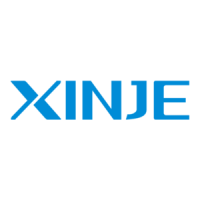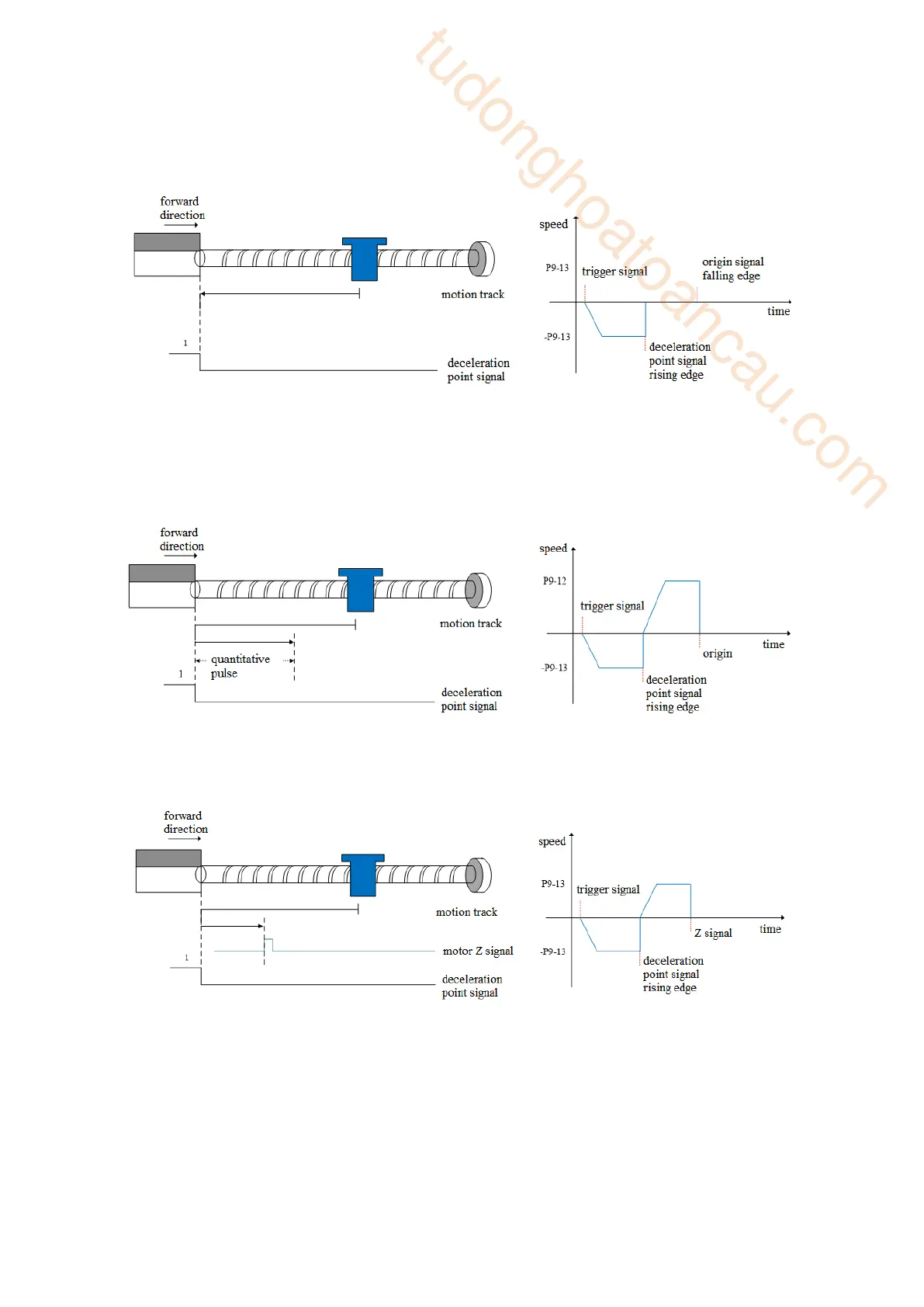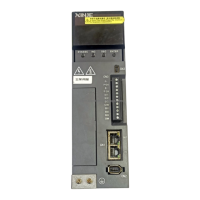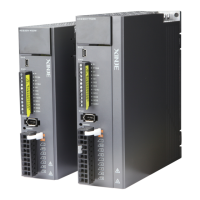value of P9-16 (touch stop homing mode speed threshold), this state remains P9-18 (touch stop homing
mode time threshold). After the set time, it is judged that the mechanical limit position is reached, and
the next action of returning to the origin can be divided into four cases:
(a) Z phase number (P9-11.0) is 0 and mechanical offset (P9-19, P9-20) is 0:
Shut down immediately.
(b) Z phase number (P9-11.0) is 0 and mechanical offset (P9-19, P9-20) is not 0:
The servo motor stops immediately. After it stops completely, the motor moves forward a quantitative
pulse (P9-19, P9-20) at the speed set by P9-12 (high speed back to the origin) according to the set
number of mechanical offset pulses, and then the motor stops.
(c) Z phase number (P9-11.0) is 1 and mechanical offset (P9-19, P9-20) is 0:
Operate in the forward direction at the low speed P9-13 (homing low speed), and then stop immediately
after encountering the rising edge of the first Z-phase signal.
(d) Z phase number (P9-11.0) is 1 and mechanical offset (P9-19, P9-20) is not 0:
Operate in the forward direction with low-speed P9-13 (homing low-speed), and then stop immediately
after encountering the rising edge of the first Z-phase signal. After complete stop, the motor will walk a
fixed pulse (P9-19, P9-20) at the speed set by P9-12 (homing high-speed) according to the set number
of mechanical offset pulses (it can operate in positive direction or negative direction, but it must be
within the mechanical limit position), and then the motor stops.
Note: only for homing mode 6 and 7.
For homing modes 6 and 7, once these two homing modes are triggered, the maximum torque during
homing is 1.1 times of the set value of P9-17 (touch stop homing torque threshold). If the internal

